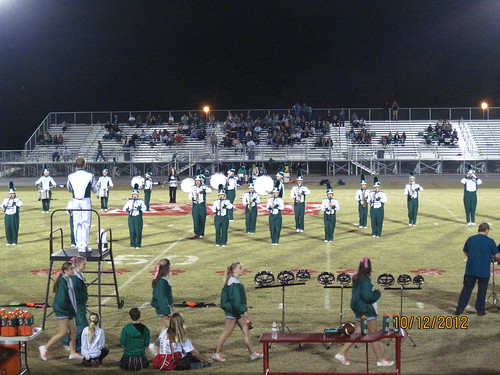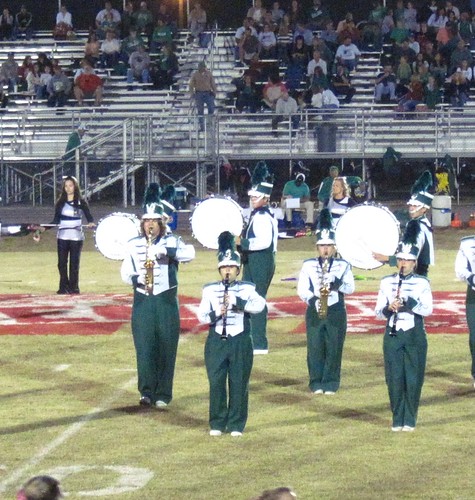momof1princess
<font color=darkorchid>i feel like i'm going to ex
- Joined
- Aug 3, 2005
I voiced my opinion earlier, but I'll start up the conversation, again
Photographically the most important specs are
sensor size (bigger is better, but its a 4-way tie in this comparison)
Aperature (smaller f/ is better for low light. Note the FZ200 only has 1 number, so it has the same, bright aperature at full zoom where other cameras are at a "darker" f/5-f/6, I would rule out the Canon for that high f/)
Full PASM modes (Aperature priority, shutter priority...) will make it easier to fully learn the Understanding Exposure). That is a weakness of my HX30. I do have full manual control, but it is not as fast and easy as others.
Depending on your style, it can be very important or inconsequential to have a viewfinder and external flash attachment.
From there, most specs are about personal preference...does the size matter? (I wouldn't mind size at my kids event, but it might get in the way at other times)
Will the battery last long enough for a typical day/event?
Some people might prefer having certain scenes available.
For me having an accurate Auto mode was important as my camera is also used by my spouse.
Based on the side by side you posted, I see the Panasonic Lumix DMC-FZ200 as having a few big advantages over the others, as well as a couple of disadvantages.
First the disadvantages -- the FZ200 is much bigger than the other cameras. It is not a compact camera. So if you truly want a compact camera that can fit in your pocket or easily fit in your purse, then cross if off the list.
Also, it's about $550 from what I saw online -- For just $100 more, you could get the RX100. Or for around that price, there are lots of other options. You can get the Sony Nex5N for about $500, and it is a much better all-around camera than the FZ200. You can even get a true SLR for around that price.
Now the advantages of the FZ200 compared to the other 3 on your list, at least according to the comparison you posted:
-- Faster lens. Aperture of 2.8, and it appears to be that way throughout the zoom. That's a much faster lens than the other 3 cameras, especially at maximum zoom.
-- Ability to shoot in RAW mode. This is great if you like to do post-processing in lightroom, or want to build your own HDR images.
-- More manual control than the others. More manual control means more freedom to override the auto and get the picture you really want.
But for the size and price of the FZ200, there are other cameras that should be on your list. Many of those cameras may have inferior zoom, but will be superior in every other way, including in image quality.
That said, for the specific purpose you've been doing -- Shooting your daughter from the stands, the FZ200 is a great choice. The extended zoom and the 2.8 aperture would really do a great job in that situation.
If you were to add other considerations in that price range:
You could get a Canon Rebel T2 with 2 lenses, including a 75-300mm zoom for just over $600:
http://www.amazon.com/Canon-Digital...=sr_1_4?s=photo&ie=UTF8&qid=1349876598&sr=1-4
For under $500, the Sony Cyber-shot DSC-HX200V .
For $500, the Sony Nex-5N: http://store.sony.com/p/Sony-NEX-5-18-55mm-lens/en/p/NEX5NK/B. It lacks the super zoom, without adding a lens. But you would have a SLR-sized sensor in a pretty small body. And can add a better zoom later on. (A good zoom lens can be added for $350).
Also in that price range, you can get some great refurbished and used cameras. Try B&H Photo, for example:
A Nikon D3100 with 2 lenses (including a zoom lens) for $515
A Sony Alpha A55 with kit lens for $530. (Since it takes old Minolta lenses, you can actually add a zoom lens cheaply, under $100. For my Sony SLR, I basically just use old Minolta lenses.)
So really, if you are looking in the $500+ range, and are looking beyond compacts, then you have lots of great options beyond the FX200.
Of the 3 compacts that you listed, the Sony Cybershot HX30V is probably the best but they are all pretty close. I happen to think Sony excels at smaller-sized cameras. (The NEX series seems better than rival bridge cameras. The RX100 is the best pure compact.). Of the 3 compacts you listed, the HX30V has superior ISO range, more megapixels, and a slightly faster lens than the other 2.
thank you both! i'm still a little confused, but now at least i know more about what i'm confused about! LOL



 ). Find one that fits your hands and allows you to navigate the menus and make sure it's not a dud by checking reviews (though, this should probably go above, you can reorder my steps).
). Find one that fits your hands and allows you to navigate the menus and make sure it's not a dud by checking reviews (though, this should probably go above, you can reorder my steps).  .
.
